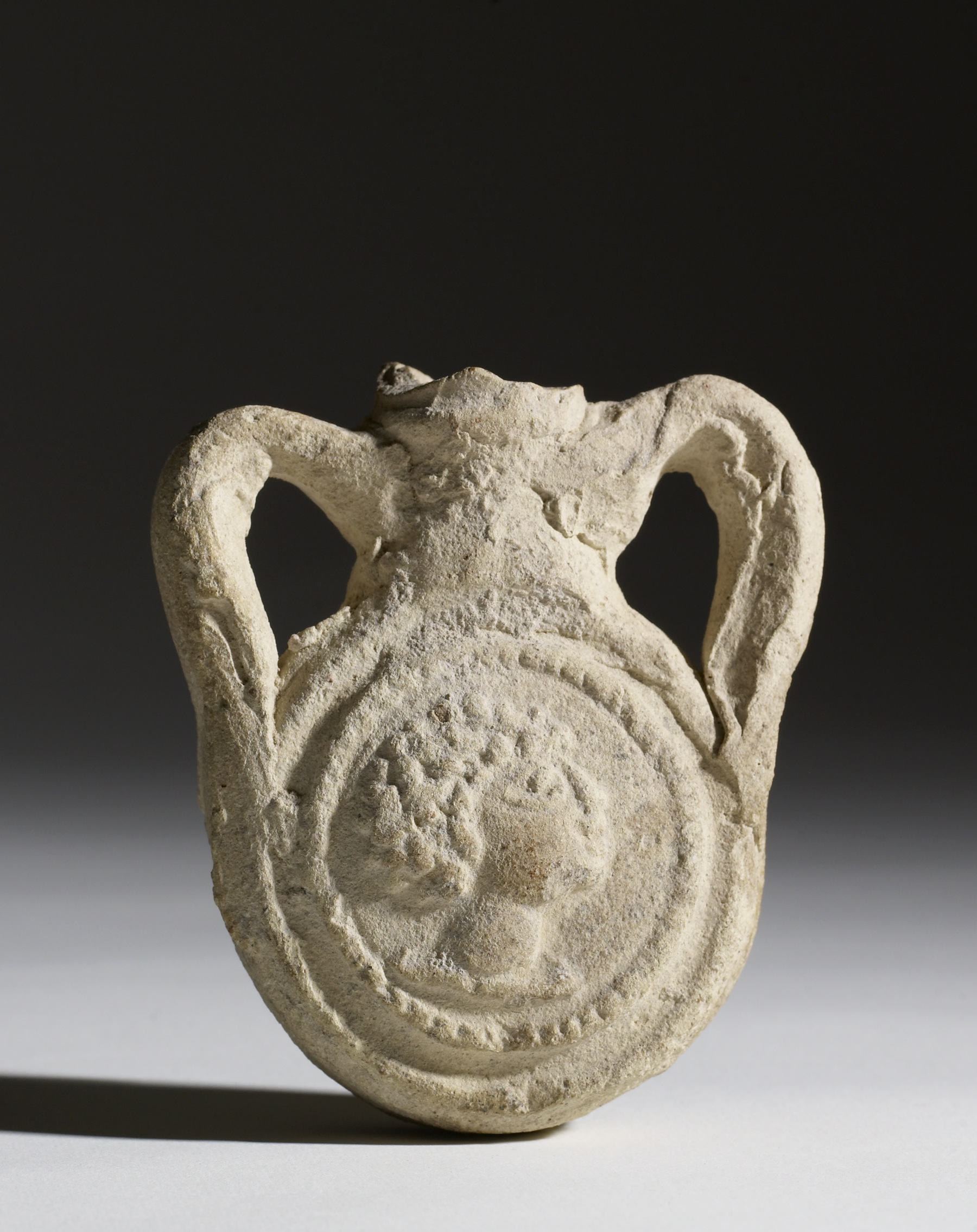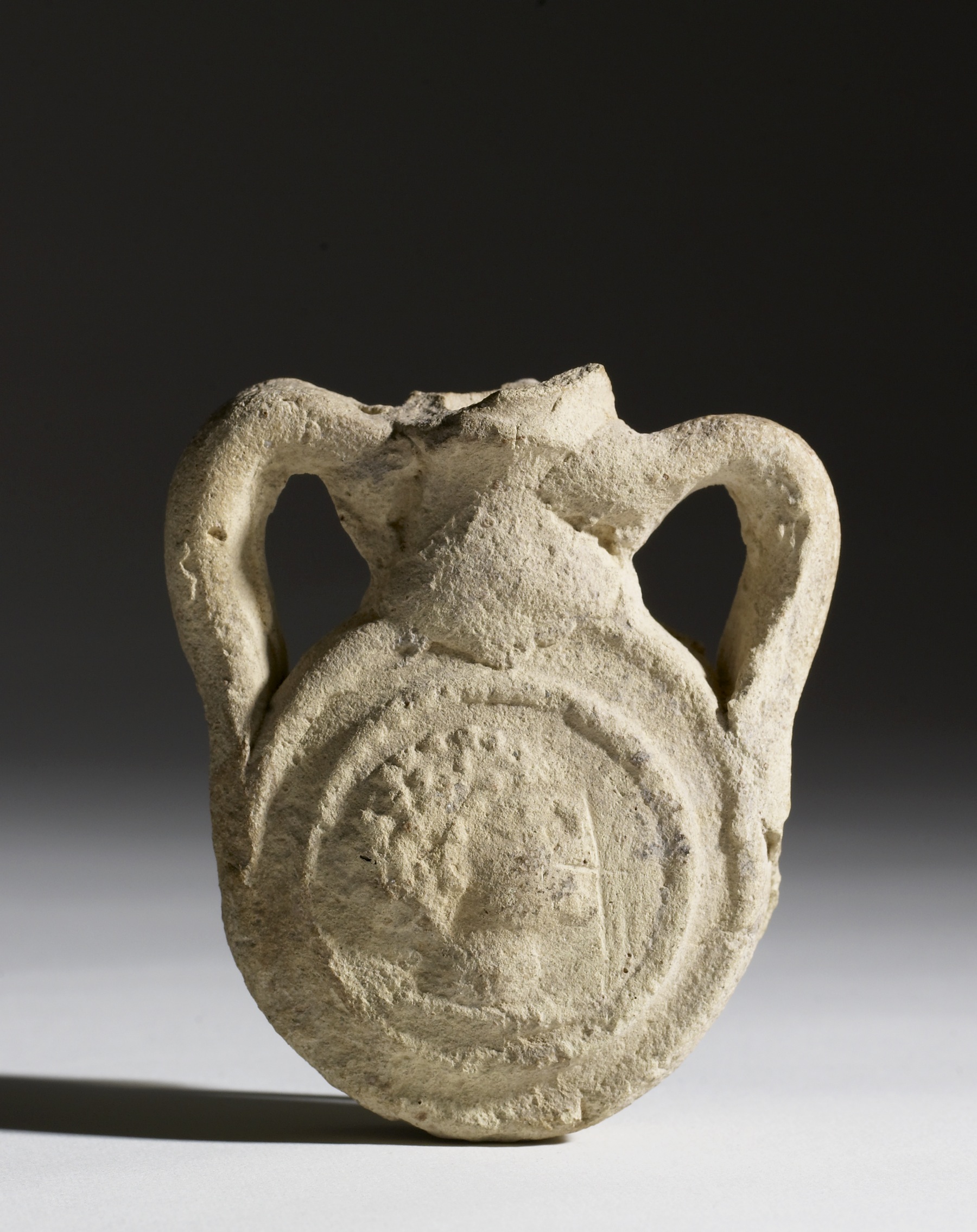Pilgrim Flask of Saint Menas
Since the beginning of Christianity, believers gathered over saints' tombs in search of spiritual and physical healing. Little flasks from the eastern Mediterranean region attest to the popularity of pilgrimages to saints' shrines. Pilgrims would fill these flasks with oil or the water stored at or near the saint's tomb and made sacred by proximity with the saint's remains, carrying these flasks away with them as physical manifestation of the saint's blessing. These two flasks came from the shrine of St. Menas. Menas was a soldier in the Rome's army who converted to Christianity. He was martyred in the third century during the persecution of Diocletian. According to tradition, Menas was buried at the spot where the camels transporting his body stopped and kneeled, refusing to go any further. Flasks dedicated to Saint Menas are often decorated with an image of the saint flanked by two kneeling camels, as we see on both the obverse and reverse of TL.2014.2.2. The repetition of the same motif on obverse and reverse, the lack of inscriptions and the decorative motif of the circle of dots around the central motif indicate a date in the sixth century, when these characteristics appear on Menas flasks. A similar flask is in the collection of the Metropolitan Museum of Art (27.94.27). Another one is in the Kauffmann collection at the Liebieghaus Museum Alter Plastik, Frankfurt, Germany (2775.34). Menas flasks were decorated with a variety of motifs, including an African head in profile, as on TL.2014.2. A similar flask is in the collection of the Museum of Fine Arts, Boston (RES.57.15) dated to the fourth–sixth century. Another example is in the Kauffmann collection at the Liebieghaus Museum (2775.159).
Provenance
Provenance (from the French provenir, 'to come from/forth') is the chronology of the ownership, custody, or location of a historical object. Learn more about provenance at the Walters.
Purchased by Maurice Bouvier [1901-1981], Alexandria or Cairo; given to Cleopatra Dibble, Washington, DC, 1950; given to Walters Art Museum, 2014.
Conservation
| Date | Description | Narrative |
|---|---|---|
| 3/19/2014 | Examination | Examined for accession. |
| 3/19/2014 | Examination | The body of the flask is made in a 2-part mold. The neck and handles are added separately. The upper rim is missing. The head in profile facing right is the same on both sides. |
Geographies
Egypt (Place of Origin)
Measurements
H: 3 5/16 × W: 2 7/8 × D: 1 3/16 in. (8.4 × 7.3 × 3 cm)
Credit Line
Anonymous gift in memory of Cleo Dibble, 2014
Location in Museum
Not on view
Accession Number
In libraries, galleries, museums, and archives, an accession number is a unique identifier assigned to each object in the collection.
In libraries, galleries, museums, and archives, an accession number is a unique identifier assigned to each object in the collection.
48.2874




